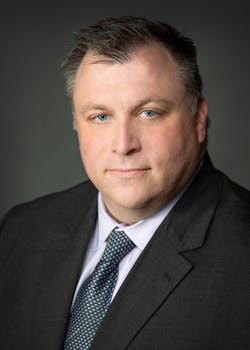As Firehouse Sees It: America Still Is Burning
As I am finishing up this column, I’m reminded that, despite five decades of work since the “America Burning” report was published, America still is burning. Although fires ebb and flow, it’s a constant in many communities despite the demographics.
Here in Fort Worth, I’m listening to the radio as firefighters work simultaneous house fires on opposite sides of the city. Both are marked as working fires, and crews had quick knockdowns, but I believe that American Red Cross was called for nine displaced residents. I’m not sure of the amount of damage or the dollar loss, but it will be some time before occupants of both structures can return home.
Earlier in the day, I saw a Twitter message about Columbus, OH, Division of Fire crews on scene of three working fires at the same time.
The morning Facebook scroll showed a handful of working fires across the country.
Although many firefighters want to work in #jobtown, they owe it to the citizens to work to save lives long before they are in peril. I understand that it’s a lofty goal and not every fire can be prevented—just like every firefighter or civilian fire death can’t be eliminated—but steps can be taken.
The foundation
“America Burning” was commissioned by the National Commission on Fire Prevention and Control to evaluate fire loss in the United States and was published in May 1973.
The committee then published 90 recommendations that have been used in some form or fashion since then. The report was expansive, including fire operations, the establishment of burn centers to help burn victims to recover and a look at transportation fires, including railways and semitrailers. It called for collaboration between the U.S. Fire Administration (USFA) and the U.S. Forest Service for fires in the forest and parks. A national and unified effort on fire prevention messaging included creating budgets to get firefighters into schools to talk with youngsters and to provide teachers with information to permit year-round education.
A year later, Congress passed the Federal Fire Prevention and Control Act of 1974, which led to the creation of the National Fire Academy. The NFA and the USFA were the foundation of the creation of a nationwide resource for fire departments, big and small.
What once was now isn’t
Growing up the son of a firefighter, I always looked forward to October, when it seemed that everyone focused on Fire Prevention Week. It was great for me to know the firefighters who visited the school all week and then to spend the day at the local station for an open house, where the whole community came out.
One of the recommendations from “America Burning” was Exit Drills in the Home (EDITH). The purpose was to get residents to practice fire safety at home and to know two ways out. McDonald’s Corporation was in on the effort and provided EDITH maps and notes on the place mats on serving trays. Storefront displays featured fire safety messages, and banners were hung over the streets at busier intersections. Libraries had displays about local firefighters. Every TV news report and newspaper focused on limiting fires and injuries for that one week.
As time went on, budget cuts hit fire prevention efforts hard, no matter who and where you are. With record-breaking and devastating wildfires across the country, the U.S. Forest Service said that it’s been forced to cut fire prevention measures and to do more with less.
Fire departments seemingly cut their prevention and outreach budgets first, and many departments saw their outreach budgets nixed during COVID-19. Since the pandemic, many have seen significantly smaller budgets for community risk reduction efforts.
The time has arrived
As we hit the 50-year mark of “America Burning,” I believe that we’re in a good spot to act on the findings from 1973 and the recent Truman Fire Forum.
One great step forward is the fact that Dr. Lori Moore-Merrell was named U.S. Fire Administrator. Moore-Merrell, who is a champion of firefighters, fire safety and data, is the exact person who we need to move the needle forward, and she’s poised to improve the outcomes for residents all over. However, she’ll need the support of local engine and truck companies.
In “America Burning,” it’s written, “The public shares their unconcern, for in the public’s image—an image which firefighters share—the fire department is a heroic-proportioned battalion of people rescuers and fire suppressers, not a professional corps of fire preventers.”
That must change. It’s been 50 years.

Peter Matthews | Editor-in-Chief/Conference Director
Peter Matthews is the conference director and editor-in-chief of Firehouse. He has worked at Firehouse since 1999, serving in various roles on both Firehouse Magazine and Firehouse.com staffs. He completed an internship with the Rochester, NY, Fire Department and served with fire departments in Rush, NY, and Laurel, MD, and was a lieutenant with the Glenwood Fire Company in Glenwood, NY. Matthews served as photographer for the St. Paul, MN, Fire Department.






